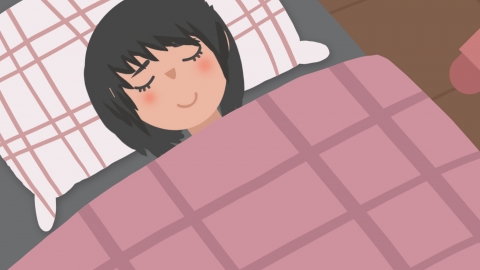What causes body tremors during sleep?
Generally, body twitching during sleep may be caused by factors such as transitions in the sleep cycle, excessive fatigue, calcium deficiency, epilepsy, or restless legs syndrome. It is recommended to seek timely medical consultation to identify the underlying cause and receive appropriate treatment under a doctor's guidance. A detailed analysis is as follows:

1. Sleep cycle transition: When falling asleep, the transition from wakefulness to light sleep may cause unstable brain neural activity, possibly leading to sudden limb twitching. This usually occurs occasionally without other discomfort and is considered a normal physiological phenomenon. No special treatment is required; maintaining regular sleep patterns, avoiding excessive excitement before bedtime, and creating a quiet sleeping environment can reduce neural fluctuations during sleep cycle transitions.
2. Excessive fatigue: Prolonged physical or mental labor can lead to muscle tension and nerve fatigue, causing sudden muscle relaxation and twitching during sleep, often accompanied by physical weakness, which can be relieved with rest. Reasonably schedule work and rest times to avoid overexertion. Soaking feet and massage before bedtime can help relax muscles. Increase dietary intake of protein and vitamins to replenish body energy.
3. Calcium deficiency: A lack of calcium in the body can increase neuromuscular excitability, causing limb twitching during sleep, often accompanied by leg cramps, lower back pain, and is commonly seen in adolescents, pregnant women, and the elderly. Patients may take calcium supplements such as calcium carbonate D3 tablets, calcium gluconate tablets, or calcium lactate granules as directed by a physician. Additionally, increasing sun exposure can promote calcium absorption, and consuming calcium-rich foods like milk and soy products is recommended.
4. Epilepsy: Abnormal discharges of neurons in the brain combined with weakened inhibitory function during sleep can easily cause limb twitching. These movements are typically stereotyped and repetitive, often accompanied by frothing at the mouth and loss of consciousness. Patients should avoid staying up late and drinking alcohol, and take medications such as carbamazepine tablets, sodium valproate sustained-release tablets, or phenytoin sodium tablets as directed by a physician to control seizures. If medication proves ineffective, surgical removal of the epileptic focus may be considered to remove the abnormal discharging brain tissue and reduce seizure frequency.
5. Restless legs syndrome: An unbearable discomfort in the legs during sleep forces limb movement for relief, which may be accompanied by twitching, leg tightness, numbness, and affects sleep quality. Patients should maintain regular sleep patterns, avoid caffeine intake, and take medications such as pramipexole tablets, ropinirole hydrochloride tablets, or gabapentin capsules as directed by a physician to alleviate symptoms. Moderate leg activity before bedtime can also help relieve discomfort.
In daily life, maintain good sleep habits, keep a fixed sleep schedule, and avoid using electronic devices such as mobile phones and computers before bedtime. Engage in appropriate physical exercise, such as brisk walking or yoga, to enhance physical fitness and nervous system stability. If twitching occurs frequently or is accompanied by other discomforts, record the frequency and associated symptoms to assist doctors in identifying the cause and implementing targeted interventions.










